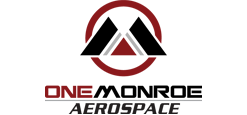
When researching propeller-driven aircraft, you may come across the term “counter-rotating.” It’s used to describe the directional movement of an aircraft’s propellers. Like all propellers, counter-rotating propellers convert rotary motion into thrust. Engines generate rotary motion that turns the propellers, thereby propelling the aircraft forward. So, what are counter-rotating propellers?
Overview of Counter-Rotating Propellers
Counter-rotating propellers are exactly what they sound like: propellers that rotate in opposite directions. If an airplane or helicopter has two or more propellers, the propellers may rotate in the same direction or opposite directions. Counter-rotating propellers are the latter. One of the propellers rotates clockwise, whereas the other propeller rotates counterclockwise.
How Counter-Rotating Propellers Work
In standard propeller-driven aircraft, the engine causes a slight yaw. This is the result of torque — as the propeller turns in one direction, a force is produced in the opposite direction. Pilots can use rudder controls to overcome this yaw. An alternative solution, however, is counter-rotating propellers.
Counter-rotating propellers work by counteracting each other. Aircraft with counter-rotating propellers have an equal number of propellers that rotate in opposite directions. Each propeller produces its own yaw, which is countered by the opposing propeller.
Why Aircraft Have Counter-Rotating Propellers
Counter-rotating propellers offer several benefits. When compared to standard propeller systems, they provide greater stability. Aircraft with counter-rotating propellers are more stable and require less manual correction from pilots.
In twin-engine aircraft with counter-rotating propellers, the aircraft is easier to manage in the event of engine failure. The propellers will still spin. The counter rotation, though, will result in less asymmetric thrust so that the aircraft experiences less yaw.
Another reason aircraft have counter-rotating propellers is efficiency. This is particularly true with contra-rotating propellers. Contra-rotating propellers are essentially counter-rotating propellers connected to the same engine. With this type of propeller setup, the second propeller will recover some of the first propeller’s energy, resulting in improved efficiency.
Counter-rotating propellers can reduce P-factor. When airplanes fly at high angles of attack, they can produce uneven thrust. Known as P-factor, it can make the aircraft more difficult to control, especially during takeoffs. Counter-rotating propellers help to balance the thrust so that airplanes and other aircraft experience less P-factor.
In Conclusion
Counter-rotating propellers offer a practical solution to some of the challenges faced by propeller-driven aircraft. By spinning in opposite directions, they help cancel out torque and reduce yaw, making the aircraft easier to handle. They can also improve efficiency by capturing energy that would otherwise be lost, particularly in contra-rotating setups.



